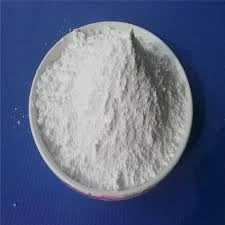Sodium Cumenesulfonate An Overview of Its Properties and Applications
Sodium cumenesulfonate is a sulfonate compound derived from cumene, a key aromatic hydrocarbon. This compound is categorized as an anionic surfactant and is commonly used in various industrial applications due to its surfactant properties. Understanding sodium cumenesulfonate, its chemical structure, properties, and applications is vital for industries that utilize this compound.
Chemical Structure and Properties
The chemical formula of sodium cumenesulfonate is C10H12NaO3S. It consists of a cumene moiety (isopropylbenzene) connected to a sulfonate group, which imparts significant hydrophilicity to the molecule. This amphiphilic nature, with a hydrophobic aromatic ring and a hydrophilic sulfonate group, allows sodium cumenesulfonate to reduce surface tension effectively.
Sodium cumenesulfonate appears as a white to pale yellow powder or granular solid. It is soluble in water and polar solvents, making it an excellent choice for various aqueous formulations. When dissolved in water, it contributes to better wetting, spreading, and emulsification properties, which are crucial in many applications.
Applications
Sodium cumenesulfonate's diverse applications stem from its versatility as a surfactant. Below are some of the primary areas where this compound is extensively used
1. Detergency and Cleaning Products Sodium cumenesulfonate is a vital ingredient in many household and industrial cleaning products. Its ability to lower surface tension allows for effective penetration and wetting of surfaces, leading to improved cleaning performance. It can be found in laundry detergents, dishwashing liquids, and surface cleaners.
sodium cumenesulphonate

2. Cosmetics and Personal Care In the cosmetics industry, sodium cumenesulfonate serves as a surfactant and emulsifier. It helps to stabilize formulations by preventing the separation of oil and water phases. Its gentle nature makes it suitable for use in shampoos, conditioners, and lotions, where it contributes to the overall texture and performance of the products.
3. Pharmaceuticals In the pharmaceutical sector, sodium cumenesulfonate is utilized as a solubilizing agent in various drug formulations. It can enhance the solubility of active pharmaceutical ingredients (APIs), making them more bioavailable. Additionally, its role as an excipient aids in the formulation of liquid medications and injections.
4. Agricultural Products Sodium cumenesulfonate is also used in agricultural formulations, particularly in pesticides and herbicides. It enhances the wetting and spreading properties of these products, ensuring even coverage on plant surfaces. This enhances the efficacy of active ingredients, leading to better pest control and crop yield.
5. Industrial Applications Beyond consumer products, sodium cumenesulfonate finds applications in various industrial processes, including textile manufacturing, paper and pulp production, and oil recovery. Its surfactant properties facilitate diverse processes ranging from dyeing and finishing textiles to enhancing oil recovery from reservoirs.
Environmental Considerations
Given the increasing focus on environmental sustainability, sodium cumenesulfonate is deemed relatively safe compared to many traditional surfactants. It is biodegradable and does not persist in the environment, which aligns with the growing demand for eco-friendly products. Manufacturers are encouraged to maintain sustainability in their production and utilization of this compound, contributing to a greener industry.
Conclusion
Sodium cumenesulfonate is a vital compound in modern chemistry, providing essential functions across a wide range of industries. Its surfactant properties enable enhanced cleaning, emulsification, and solubilization, making it indispensable in consumer goods, pharmaceuticals, and agricultural applications. As industries increasingly prioritize environmental responsibility, sodium cumenesulfonate's biodegradable nature positions it as a desirable component in the formulation of sustainable products. Understanding this compound's properties and applications will be crucial for industries aiming to innovate and adapt to changing market demands while maintaining operational efficiency and environmental stewardship.

